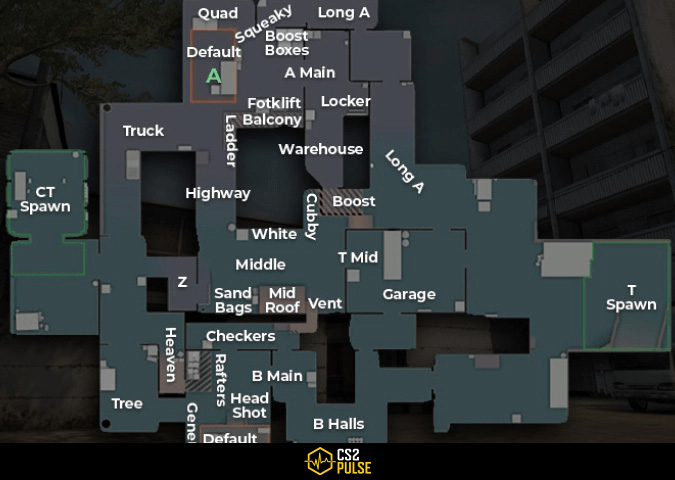79tka Insights
Your go-to source for the latest news and information.
Callout Chronicles: Navigate Your Way to CS2 Glory
Unlock your path to CS2 success with Callout Chronicles! Dive into expert strategies and tips to dominate the game like a pro!
Essential Strategies for Mastering Callouts in CS2
Mastering callouts in CS2 is crucial for enhancing team communication and strategy execution. Effective callouts not only provide valuable information about enemy positions but also help your teammates coordinate their movements. To begin, it's essential to keep your callouts clear and concise. Use well-established callout names for specific locations on the map, such as "A site", "B stairs", or "mid". Consistent use of these terms will minimize confusion during critical moments and allow your team to act swiftly. Remember, brevity is key—avoid unnecessary details and focus on communicating the most relevant information.
Another strategy for mastering callouts in CS2 is to develop a shared understanding of map angles and positions with your team. You can do this by creating a map guide and discussing callouts during practice sessions. Additionally, employing color-coded markers or even physical notes can help reinforce these concepts. When your team has a comprehensive grasp of callout terminology, you'll find that response times improve significantly during matches. Moreover, make it a habit to listen to your teammates' callouts—acknowledge them and provide feedback when necessary, as this mutual understanding fosters a more cohesive gameplay experience.

Counter-Strike is a popular tactical first-person shooter that pits teams of terrorists against counter-terrorists. One of the versatile weapons available in the game is the mp7, which offers a great balance of mobility and firepower, making it a favorite among many players.
Top 10 Tips to Enhance Your Communication Skills in CS2
Effective communication is crucial in CS2, whether you’re strategizing with your team or exchanging information with opponents. Here are the top 10 tips to enhance your communication skills:
- Understand Your Audience: Tailor your messages based on your team’s understanding and your current game situation.
- Be Clear and Concise: Use simple and direct language to ensure your teammates grasp your intentions quickly.
- Practice Active Listening: Pay attention to what others are saying, which will help you respond appropriately and foster a collaborative environment.
- Utilize In-Game Voice Chat: Make use of voice commands to convey information swiftly, especially during high-pressure situations.
- Maintain a Positive Attitude: Encouragement can boost team morale, so keep your tone upbeat, even in challenging moments.
- Use Visual Aids: When possible, use on-screen indicators or markers to signal your plans, making it easier for teammates to follow.
- Stay Calm Under Pressure: Emotions can run high in CS2, so practice methods to stay calm and communicate rationally.
- Be Respectful: Always maintain respect for your teammates to create an atmosphere where everyone feels comfortable communicating.
- Gather Feedback: After matches, ask your team for ways to improve communication in future games.
- Learn from the Best: Watch professional players and note their communication styles to adopt effective strategies.
How to Create Effective Callout Maps for CS2 Gameplay
Creating effective callout maps for CS2 gameplay is crucial for team communication and strategy. These maps serve as a visual tool that helps players quickly identify key locations, call out enemy positions, and coordinate tactics efficiently. To start, you should first analyze the specific map you want to create callouts for. Identify significant areas such as spawn points, high-traffic routes, and common hiding spots. Once you have noted these areas, you can begin drafting your callout map by using tools like Adobe Illustrator or even simpler platforms such as PowerPoint, where you can annotate and label important locations.
Next, consider organizing your callout maps for clarity and ease of understanding. Use a consistent naming convention for callouts, ensuring that all team members are on the same page. Implement color-coding to differentiate between the roles, such as sniper positions or rush routes. Make sure to test the usability of your callout map during practice matches, allowing your teammates to become familiar with the design and terminology. Here are a few tips to consider:
- Keep the map simple and avoid clutter.
- Highlight the most critical areas, adding details as necessary.
- Update the map based on new strategies or gameplay changes.